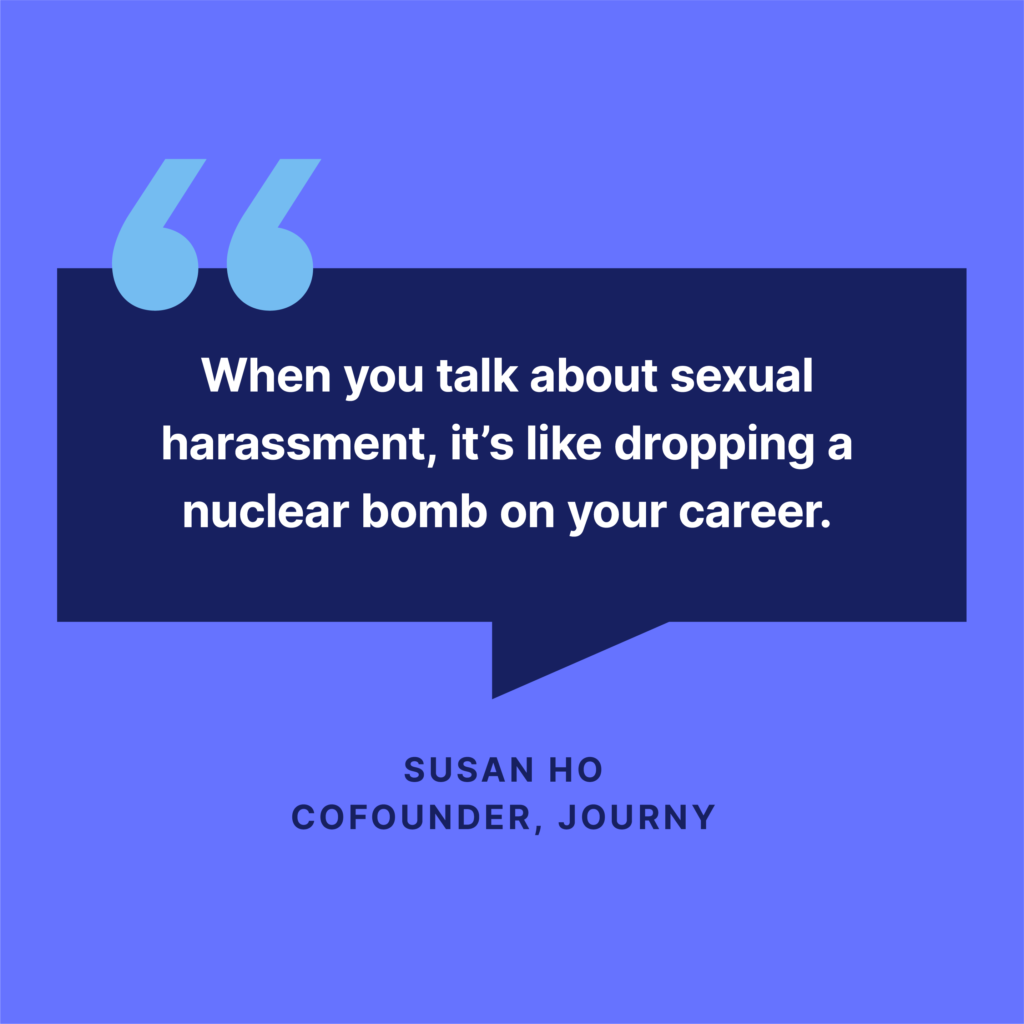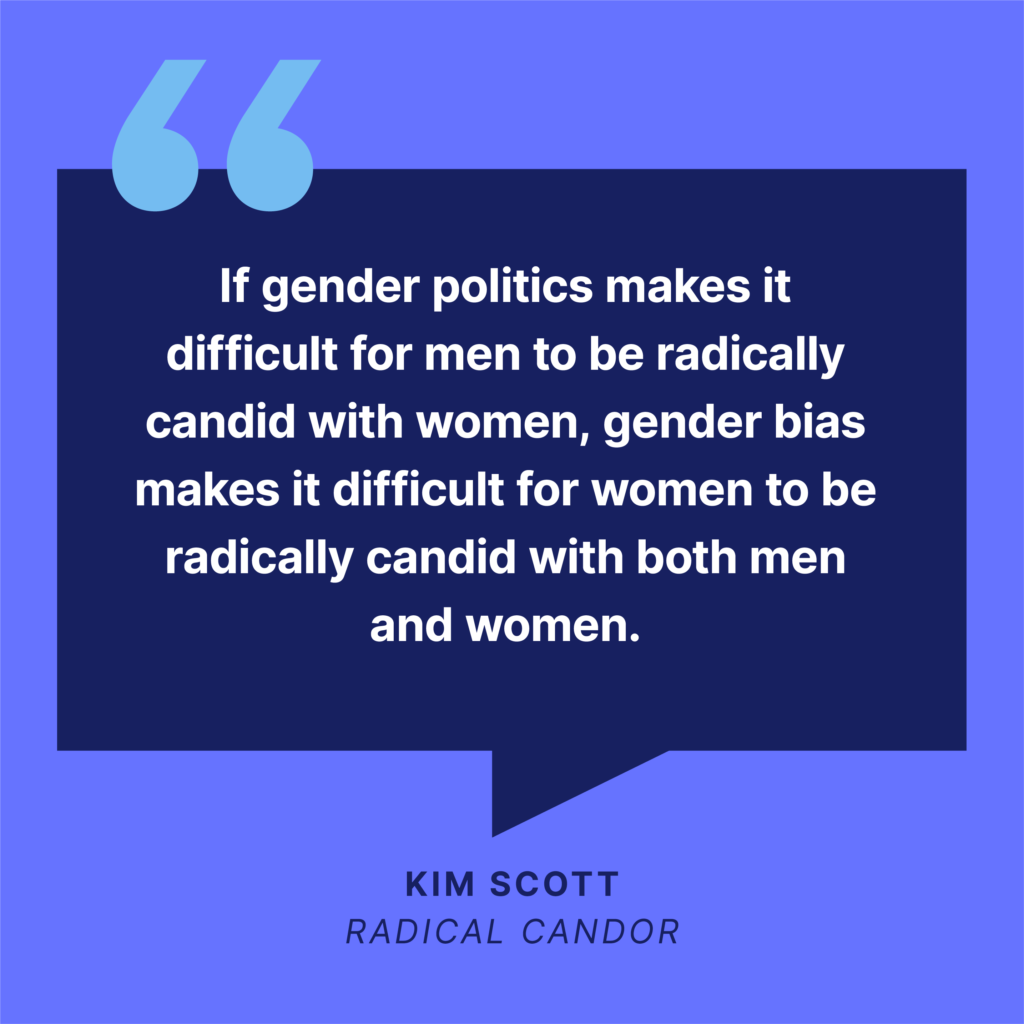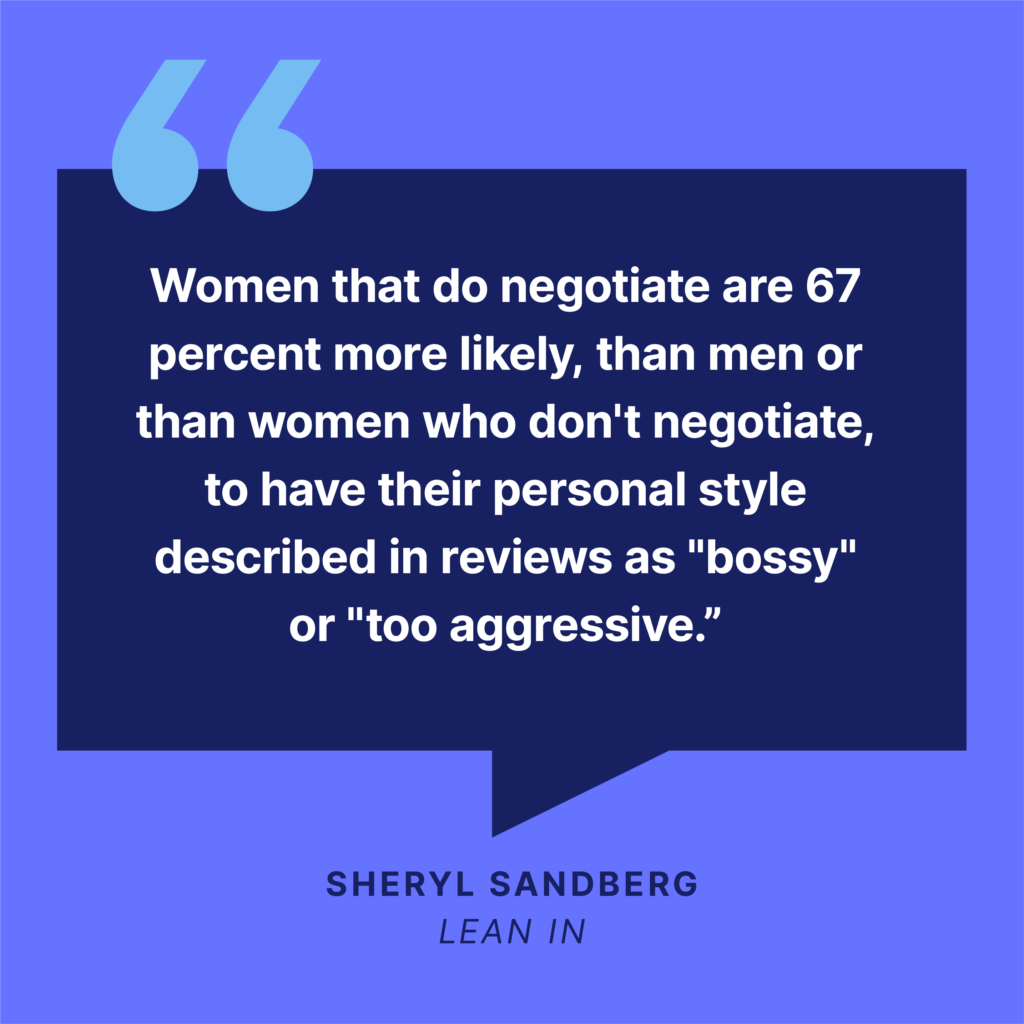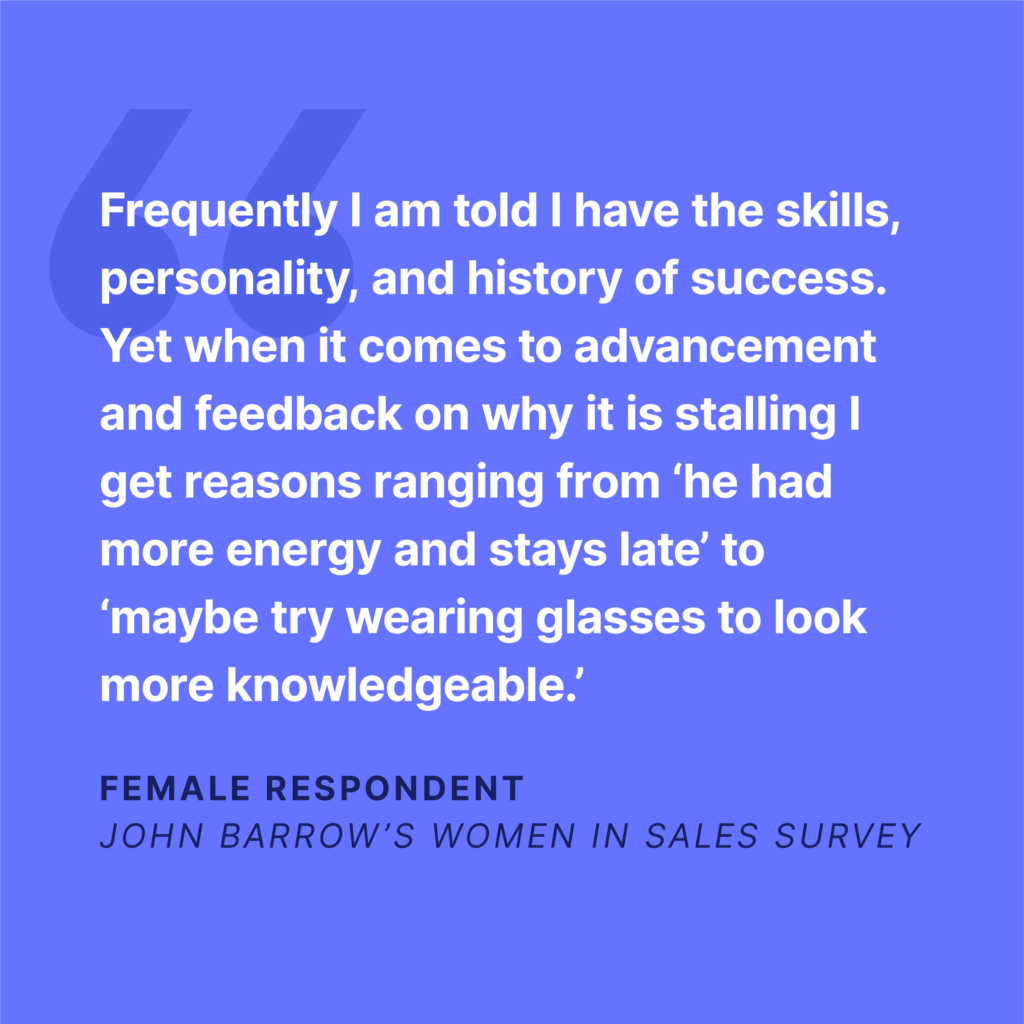How to Close Tech Gender Gap: Lessons from Silicon Valley’s “Brotopia”
Gender discrimination is rampant in tech. Here’s what women (and the data) say needs to change to close the tech gender gap.
Protect your business today!
Get a QuoteGender discrimination in tech is a big topic these days and for good reason — the evidence of its existence is overwhelming (just look at how many cases of sexual harassment have appeared in the last three years alone).
That said, you might be surprised to hear that there are still an incredibly large number of people who are oblivious that it’s actually a thing, including how prevalent sexual harassment is.
Take this interview with Emily Chang, for instance, where she describes the polarized reactions she’s seen touring for her book “Brotopia” (the term she’s coined to describe the male-dominated tech world in Silicon Valley):
“Half the audience feel so validated and grateful that someone is finally speaking for them, while half are completely in disbelief. For so long, women have been living this every day and men have been ignorant of it and blind to it.”
Or this study of unconscious bias at Github, where although women’s suggestions were accepted more frequently than men, it only happened when those who were reviewing them didn’t realize they were women.
Any way you look at it, the tech world is stacked against women and it’s creating an environment where many simply choose not to continue — turnover rates for women in tech are at more than 50%.
Here’s what women from the tech world say needs to change in order to reverse the trend. First, a bit of history.
Visual: A History of Harassment in Tech
How to Close The Gender Gap and Eradicate Sexual Harassment
Those best qualified to speak on what needs to change are women themselves. Here are quotes from women in tech that illustrate what they’ve experienced and what needs to be done to create an environment where women aren’t constantly doing two jobs (the ones they’re getting paid less than men for and the one they have to do to prove they belong).
1. Create a Safe Environment for Women to Speak Up
Women who have experienced sexual harassment have gone decades without saying anything for fear of repercussions or how it will impact their careers and companies.
For female entrepreneurs, there’s the reality that it could affect their ability to get funding or harm their business in some other way. And for every woman in tech, there’s the fear of creating the perception that they’re “hard to work with” by the men around them, which affects promotions and career progression.
That’s why creating a safe space for women to speak up is so critical (especially with instances of sexual harassment). Without it, women will just continue to feel they have to hide it or will leave all together.
The problem is, most tech company policies aren’t currently designed to provide this. In fact, the results of a study by Carlton Fields Jorden Burt actually indicate that they’re typically designed to do the opposite — they found that tech companies frequently ask employees to waive their rights to sue over employment issues and instead push private arbitration.
And as a result, sexual harassment is rampant within The Valley. Here’s a picture of just how widespread it is according to the numbers:
Visual: Sexual Harassment by the Numbers
Needless to say, the rate at which women experience sexual harassment in the tech world is unacceptably high (and probably higher than even these statistics would indicate, given many choose not to report it). That means the likelihood that it’s already happening or could happen at your company without you knowing it is extremely high as well.
Simply put, your company must be prepared to address any unacceptable behavior as soon as you find out about it (it’s why having an EPLI insurance policy is a smart idea). And given that most women feel the course of actions most take to address any inappropriate behavior are not enough, it’s important to do so adequately.
2. Focus on Inclusion, Not Just Diversity
Nothing is more toxic to ANY of your employees than having them feel like their voice doesn’t matter. And women in tech feel like this all the time — not just because they’re one of the few in the room, but because they’re not included even though they are.
In tech, many important business deals and networking opportunities occur in places outside of work (like the golf course for instance). And women get snubbed from these all the time, simply because of gender.
In fact, in one survey, 66% of women in tech reported feeling excluded from key social or networking opportunities simply because they were not male.
But it’s more than offsite activities that lend to women feeling like outsiders, even though they share a workplace. For example, in another survey, half of women reported being made responsible for tasks their male counterparts weren’t expected to do.
Simply put, there’s a big difference between diversity and inclusion. And it takes inclusion to create real change.
3. Eliminate Double Standards and Unconscious Biases
Numerous studies have shown how unconscious biases exist within the tech world — take Github’s study for instance.
But when it comes to fixing these double standards, research presented via the Harvard Business Review suggests that the tech world’s previous approaches have failed for a critical reason: they point the blame at individuals rather than culture and processes (hiring, promotions, etc.) that are built to naturally favor the status quo.
And while education of individuals in leadership (typically men) is certainly key for the sake of awareness, the research found that most in leadership are still focusing on helping women “fit the existing mold” rather than redesigning it entirely.
Simply put, to create real change, not only do leaders need to be made aware of the biases that exist, they need to account for them in the way that their HR processes are designed as well.
Here are the most common double standards and biases that women in tech face that you should look to redesign your processes to account for, as told by women in tech.
Stop Asking About Family
A whopping 75% of women from one survey mentioned they’ve been asked about family life, marital status, and children in an interview. And 40% also feel the need to speak less about their family to be taken more seriously. This rarely happens at the same frequency for men (even those who have children or a family already).
Simply put, stop asking these questions.
Eliminate Criticism Over Communication Style
Most women in tech are regularly stuck in a communication conundrum they can’t solve. If they try to assert themselves, they’re told they’re too aggressive. If they don’t, they’re told they’re too passive and get looked over for things like promotions and involvement in choice projects.
That, and they often hear things like:
- “Oh lighten up, no need to be so sensitive.”
- “Whoa, no need to get so emotional!”
In fact, in a survey of women with over 10 years of experience in tech, of the 84% that reported they’ve been told that they are too aggressive, half of them reported hearing it more than once.
Needless to say, many women feel undervalued and leave (it’s the number one reason). So if you’re in leadership, it’s important to encourage women to use their voices and not criticize them for doing so.
Remove Assumptions About Capability or Role
A great example to men of how women experience this kind of discrimination actually comes from a man named Kim O’Grady. For almost four months, Kim sent his resume out looking for work and came up empty… until he put “Mr.” in front of his name.
Some companies have begun redacting names and other gender-specific evidence from resumes and looking at qualifications and experience anonymously to account for this kind of bias.
4. Promote on Results
The quotes above are not isolated instances of women making less than men for the same job or getting passed over for a promotion in the tech world. In fact, a study published in March of this year (2020) by Dice shows that across the board in nearly every role, women make substantially less than men:
Interactive: Gender Pay Gap by State
Utah: -$16,871
Source: Dice Insights
Simply put, there’s absolutely no reason why women should be paid less for the same work or get skipped for promotions if their work is as good or better (as it often has to be to even be considered for one at the moment).
Unfortunately, there’s a lot of work to be done on this front because half of all women report being frustrated by pay inequality.
It’s Time to Hire More Female Tech Leaders
In many ways, the venture capital world provides the starkest example of just how dramatic the gender gap is in tech. Since most startups require funding to even get off the ground, securing that is key.
Unfortunately, startups with female founders are grossly underfunded and the data seems to indicate that it’s because of a lack of women in leadership positions at the VC/board level. Here is a snapshot of the funding gap in numbers.
Visual: the State of VC Funding for Female Founders
There are plenty of qualified women in tech who should be leading teams, companies, and getting funding for their ideas but aren’t for so many of the reasons mentioned above. And there would be more if women were given the opportunity.
And though it shouldn’t need to be said, the more it becomes normal for women to be seen thriving in leadership positions and being well paid for their efforts, the data seems to indicate we’d be more likely to see additional women enter the tech industry.
It’s up to the current leaders of the tech industry to put an end to biased practices and processes — and create an equal environment for all.
Want to learn more about our coverages?
Related articles and resources
-
October 11, 2024
-
-
2024 Cyber Risk Index shows coverage confidence increase, even as startups fear AI’s shadow
November 19, 2024 -
5 professional liability claims examples: Real-world cases and lessons learned
November 12, 2024








